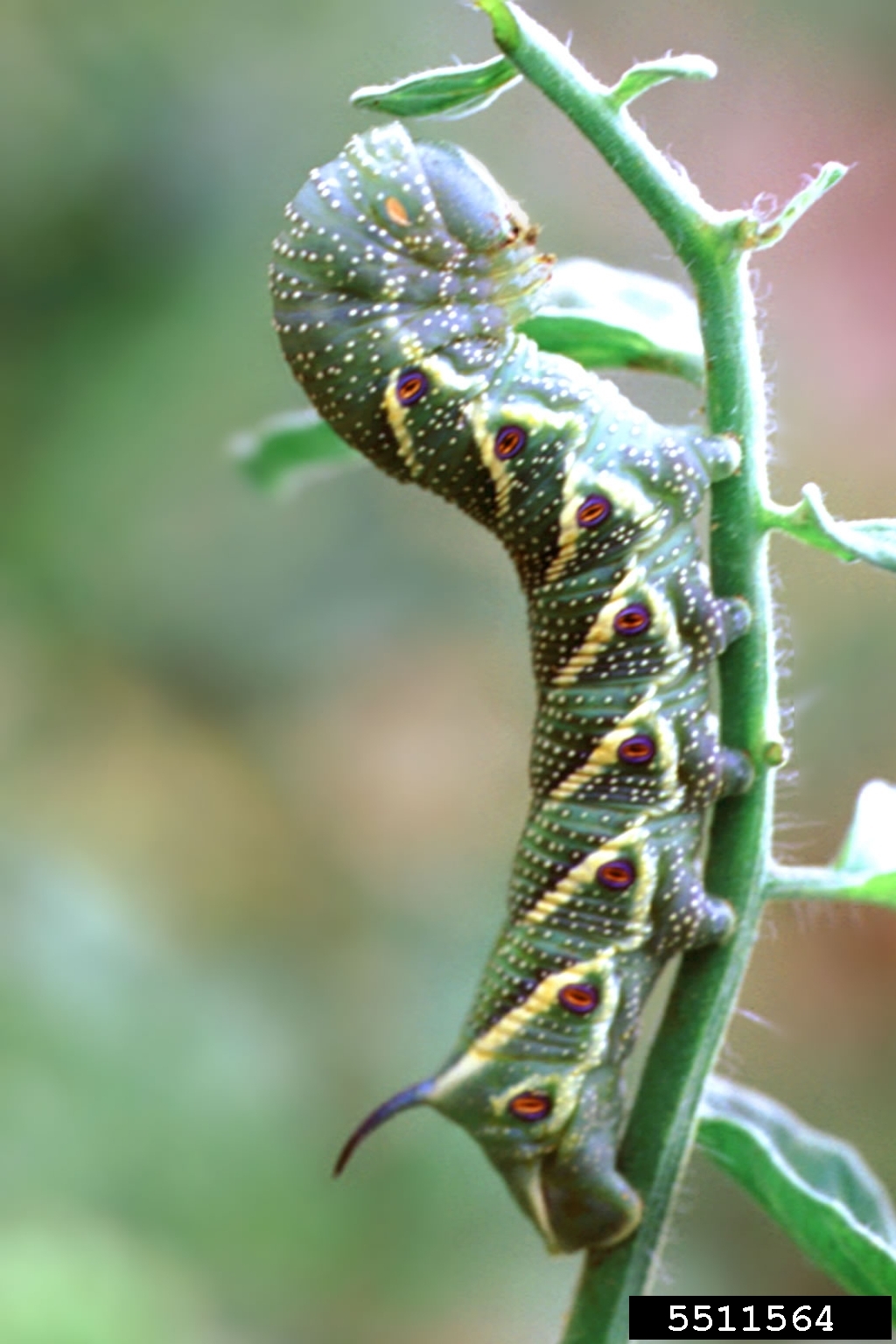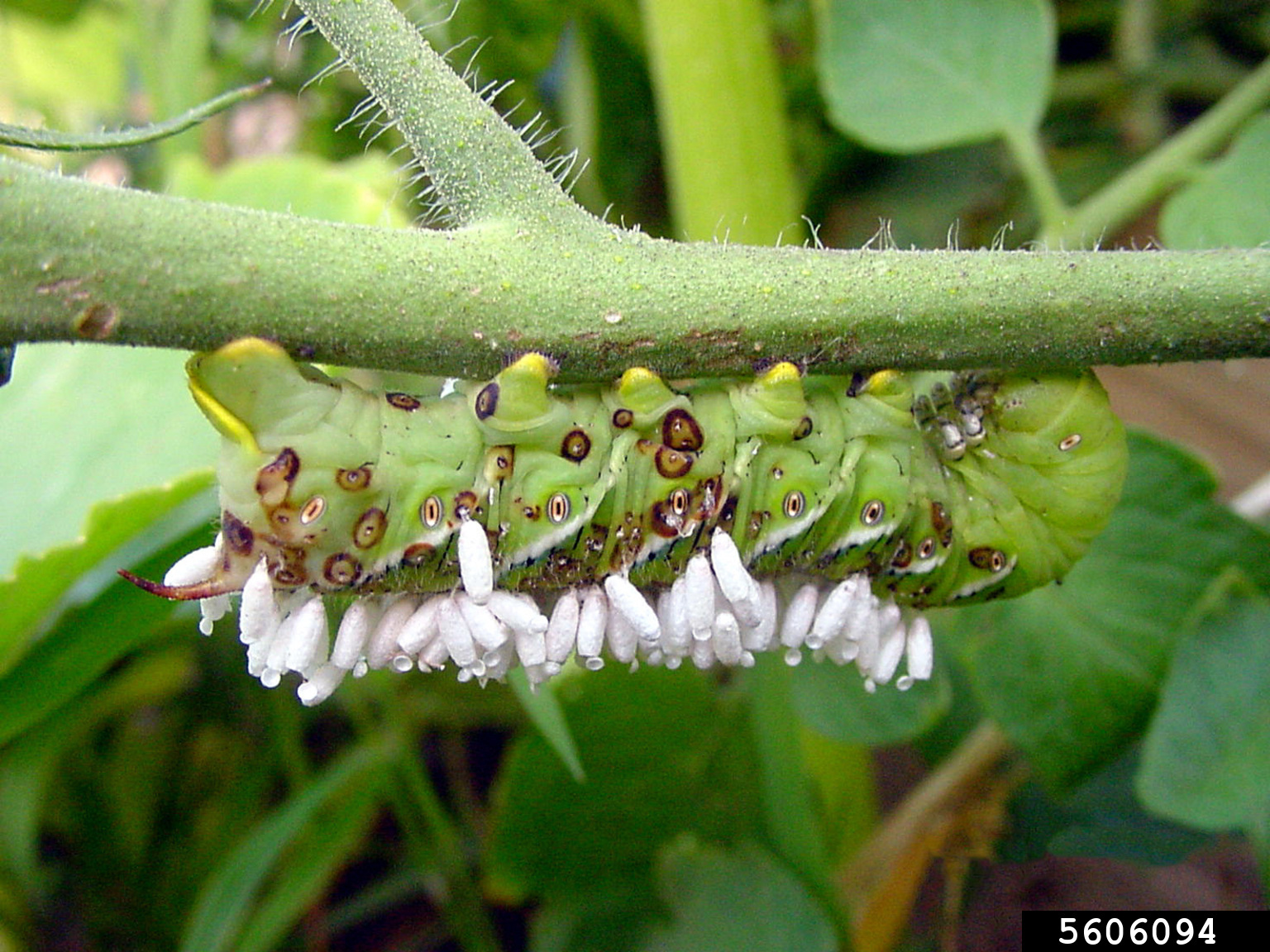
Tomato hornworm
Damaging but easy to control

Tomato hornworms are huge (up to 10 cm long!), unique and easy to spot. These are the caterpillar stage of the hornworm moth (Manduca quinquemaculata), which are an occasional problem on the prairies.
Tomato hornworm caterpillars chew on the foliage and sometimes the fruit. They prefer tomatoes but occasionally chew on pepper, eggplant and potatoes. Secondary hosts include weeds in the nightshade family such as: hairy nightshade, wild tomato and black henbane.
If tomato plants have been chewed upon, look for this culprit. They usually start chewing on the top of the plant and work their way down, almost defoliating it. They also leave large dark droppings (frass) on leaves and stems. Although they camouflage well on foliage, these chewers are fairly easy to pick and destroy.
Their natural enemies include: ladybugs, green lacewings and especially the braconid wasp as shown in the photo on the right. Braconid wasps (Cotesia congregata) lay their eggs into the hornworm. The eggs hatch and the larvae use the hornworm as a food source, then spinning these tiny cocoons. Note that each cocoon has a hole on the end, from which the winged adults emerge. This kills the hornworm.
Life cycle:
Adult hornworm moths emerge in the spring and mate. Females lay oval, light green eggs on leaf surfaces. Caterpillars hatch and begin to feed immediately. Once mature, the caterpillars drop to the ground and burrow into the soil to pupate. Moths emerge a few weeks later to begin a second generation which repeats the cycle. The pupae remain underground over winter.
Control:
- Handpick and destroy or toss into a bucket of soapy water.
- After harvest, till the soil to expose hornworm pupae to cold and predators.
- Keep weeds picked to prevent egg laying on secondary hosts.
Sources:
Williams, S.; Skinner, H. (2011). Gardening, naturally: A chemical-free handbook for the Prairies. Regina, Saskatchewan: Coteau Books.
https://extension.umn.edu/yard-and-garden-insects/tomato-hornworms
http://www.omafra.gov.on.ca/IPM/english/tomatoes/insects/tomato-or-tobacco-hornworm.html#beginner

